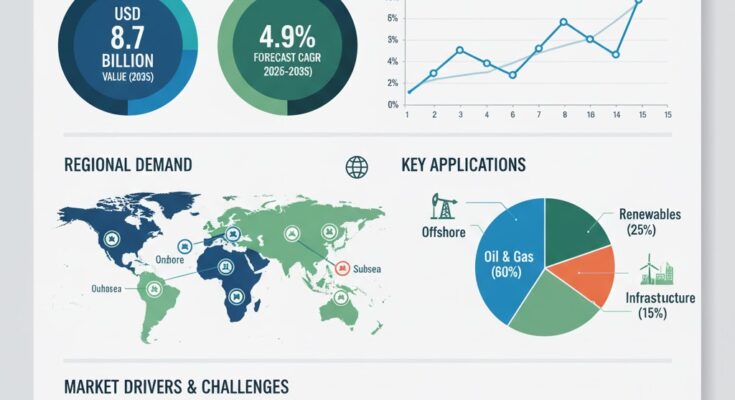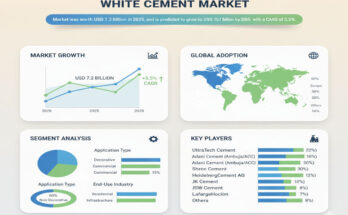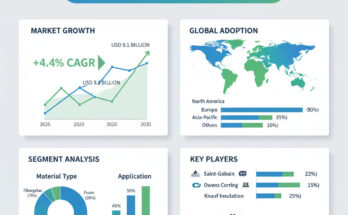The global flexible pipe market is poised for robust expansion, supported by rising offshore oil & gas exploration, renewable energy applications, and ongoing infrastructure modernization across key regions. According to a recent industry analysis by Fact.MR, the market is valued at USD 5.4 billion in 2025 and is projected to reach USD 8.7 billion by 2035, recording an absolute increase of USD 3.3 billion. This growth reflects a steady compound annual growth rate (CAGR) of 4.9% over the forecast period.
Market Overview
Flexible pipes have become indispensable in the energy, industrial, and construction sectors due to their ability to withstand high pressure, corrosion, and extreme temperatures while maintaining flexibility and durability. These pipes are primarily used for transporting fluids and gases in offshore and onshore operations, as well as for renewable and civil applications.
The increasing demand for cost-efficient and lightweight pipe systems is driving innovation in materials, with thermoplastics and composite reinforcements replacing conventional steel in several applications.
Market Drivers: Offshore Development, Energy Diversification, and Technological Advancements
Rising Offshore Oil & Gas Exploration
The global energy sector continues to rely heavily on offshore reserves. Flexible pipes are essential for connecting subsea structures and ensuring safe, uninterrupted transport of hydrocarbons under deepwater conditions. Their resistance to fatigue and corrosion makes them a preferred choice for offshore operators aiming to reduce maintenance costs and enhance longevity.
Growing Adoption in Renewable and Industrial Applications
As the world transitions toward cleaner energy, flexible pipes are increasingly being used in geothermal, hydrogen transport, and biofuel industries. Their adaptability supports diverse industrial needs, from water management systems to chemical processing, contributing to a broader application scope.
Material Innovation and Cost Efficiency
Advancements in composite materials and thermoplastic polymers are improving performance metrics such as tensile strength, fatigue resistance, and corrosion protection. These innovations also reduce installation costs and environmental impact, aligning with sustainability goals in infrastructure development.
Competitive Landscape
The flexible pipe market is moderately consolidated, with global and regional players focusing on material innovation, strategic partnerships, and expansion into emerging energy segments.
Key Players in the Flexible Pipe Market include:
- TechnipFMC plc
- National Oilwell Varco (NOV Inc.)
- Prysmian Group
- Shawcor Ltd.
- Magma Global Ltd.
- Airborne Oil & Gas
- Parker Hannifin Corporation
- Wienerberger AG
- SoluForce BV
- Polyflow Ltd.
- ContiTech AG (Continental AG)
- FlexSteel Industries, Inc.
- Strohm Group
- Pipelife International GmbH
- GE Oil & Gas (now part of Baker Hughes)
These companies are investing in R&D to develop high-performance pipes capable of withstanding deeper water pressures and extreme environmental conditions. Strategic initiatives such as mergers, acquisitions, and long-term supply agreements are also reshaping competitive dynamics.
Recent Developments
- August 2025 – TechnipFMC introduced a next-generation composite flexible pipe for ultra-deepwater operations, enhancing operational efficiency and extending lifespan by over 30%.
- May 2024 – Prysmian Group expanded its production capacity in Europe to meet growing demand for thermoplastic-based flexible pipes in renewable energy and industrial projects.
Future Outlook: Smart and Sustainable Flexible Pipe Solutions
The future of the flexible pipe market will be defined by:
- Smart Monitoring Systems – Integration of sensors for leak detection and real-time monitoring.
- Sustainability Focus – Use of recyclable and eco-friendly materials.
- Enhanced Pressure and Temperature Resistance – For ultra-deep and high-pressure applications.
- Renewable Energy Integration – Support for hydrogen transport, offshore wind, and geothermal systems.
By 2035, the flexible pipe market is expected to play a central role in connecting traditional and renewable energy infrastructures, fostering a more resilient and sustainable global energy ecosystem.



